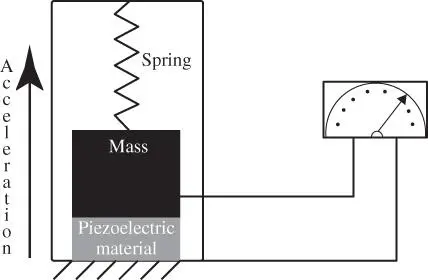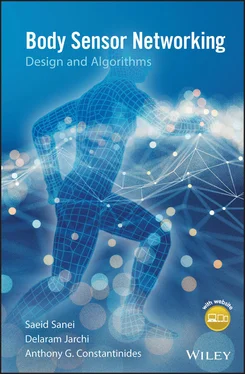38 38 Compston, A. and Coles, A. (2008). Multiple sclerosis. Lancet 372 (9648): 1502–1517.
39 39 Compston, A. and Coles, A. (2002). Multiple sclerosis. Lancet 359 (9313): 1221–1231.
40 40 Murray, E.D., Buttner, E.A., and Price, B.H. (2012). Depression and psychosis in neurological practice. In: Bradley's Neurology in Clinical Practice, 6e (eds. R. Daroff, G. Fenichel, J. Jankovic and J. Mazziotta). Philadelphia: Elsevier/Saunders.
41 41 Kalia, L.V. and Lang, A.E. (2015). Parkinson's disease. Lancet 386 (9996): 896–912.
42 42 National Institute of Neurological Disorders and Stroke (NINDS). (2016). Parkinson's Disease Information Page. https://www.ninds.nih.gov/Disorders/All-Disorders/Parkinsons-Disease-Information-Page(accessed 25 November 2019).
43 43 Fisher, R., van Emde Boas, W., Blume, W. et al. (2005). Epileptic seizures and epilepsy: definitions proposed by the International League Against Epilepsy (ILAE) and the International Bureau for Epilepsy (IBE). Epilepsia 46 (4): 470–472.
44 44 Fisher, R.S., Acevedo, C., Arzimanoglou, A. et al. (2014). ILAE official report: a practical clinical definition of epilepsy. Epilepsia 55 (4): 475–482.
45 45 Taflinger, R. F., (1996) Taking ADvantage: The biological basis of human behavior, http://public.wsu.edu/∼taflinge/biology.html (accessed 25 November 2019).
46 46 Marino, P. C. (2005) Biological rhythms as a basis for mood disorders, Http://www.personalityresearch.org/papers/marino.html(accessed 25 November 2019).
47 47 Revelle, W., Humphreys, M.S., Simon, L., and Gilliland, K. (1980). The interactive effect of personality, time of day, and caffeine: a test of the arousal model. Journal of Experimental Psychology: General 109: 1–31.
3 Physical, Physiological, and Biological Measurements
3.1 Introduction
Nowadays, many of the physical, physiological, biological, and behavioural states of the human body can be measured, evaluated, and described by means of wearable sensors. These sensors can monitor the state of the human body for longer than an expert's observation. Often, the fusion of data modalities collected using different sensors is used for diagnostic purposes.
Although the physical state of the human body can be observed in detail using video cameras or in some cases listened to using microphones, such modalities are subject to breach of privacy, costly to deploy, and are less fascinating for automated analysis body movement. Therefore, in this chapter we ignore these two modalities and investigate the cases where humans can wear sensors for a longer time to enable long-term monitoring. Here, the most popular methods for measuring very common human body states are explained and the advanced approaches described. The details as well as experimental considerations are described in later chapters.
3.2 Wearable Technology for Gait Monitoring
As described in Chapter 2, many physical or mental diseases or abnormalities directly or indirectly affect human gait. Stroke, Parkinson's, and leg amputation readily come to mind. Thus, gait analysis can be used to monitor both the cause and the symptoms of a wide range of such abnormalities. The state of gait can be measured using a number of sensing modalities (video, audio, footstep, acceleration, gravitational force, directionality, etc.). Among them, acceleration measurement is reasonably accurate, robust, cheap, and easy to do. It has been well established that in an unrestricted environment the most widely used method for effective gait analysis is performed using an accelerometer. This sensor is often combined with a gyro and magnetometer in a small and compatible inertial measurement unit (IMU).
The measuring instruments for quantitative gait analysis have been integrated into human recognition as well as clinical decision-making systems for assessing pathologies manifested by gait abnormalities. Recent advances in wearable sensors, especially inertial body sensors, have paved the path for a promising future gait analysis [1]. Possibly the most important advantage of using gait sensors compared to gait observation using video cameras is that they allow the subject to enjoy the free-living environment over a long period while being monitored.
Despite some recent techniques in human recognition through gait analysis using wearable sensors, e.g. [2–4], a large number of current studies have been dedicated to patient monitoring, such as those with ankle fracture [5], fall injuries [6], osteoarthrosis [7], ataxic [8], multiple sclerosis [9], hip arthroplasty [10], geriatric [11], post recovery [12], and Parkinson's [13–16]. In addition, gait and posture monitoring for athletes has become a significant area of research in sport science [17, 18] mainly for enhancing the capability of athletes and preventing their injuries.
3.2.1 Accelerometer and Its Application to Gait Monitoring
Traditional optical motion capture systems, by means of video cameras, have long been used for human gait analysis, and some clinics and motion laboratories have adopted them as a classic way of motion monitoring. These systems include a stationary system such as a treadmill surrounded by a number of video cameras. Obviously, the main limitation for using such sensors is that the subjects have to move and perform in a limited space within the laboratory so they can be captured by a number of cameras installed around that region. In addition, although such systems can perform highly accurate human motion analysis, they are a relatively expensive platform and require expert operation [19]. Finally, for patient monitoring and assistive technology, such systems are subject to privacy breach and therefore have limited application, particularly when the system is to be deployed for monitoring a wider community of patients, athletes, and so on.
In [20] a comprehensive review of accelerometers has been provided. Presently, by itself or as part of an IMU, accelerometers find applications in consumer devices such as digital cameras, health trackers, smartphones, cars, and interactive computer games. In less prominent applications, accelerometers are used in some industrial environments, such as for measuring vibrations between motors and their mountings and for measuring tilt. All these require accelerometers to provide higher sensitivity, robustness, and smaller size at a lower cost. As a result, accelerometers have proven very useful for in vivo movement analysis.
Sensor deployment to both environmental and human body communication networks has led to many important applications. For example, the method of placement and attachment of the sensor to human body for optimal sensing and analysis of the captured data has to be studied and taken into account in the design of the whole system.
Commonly used accelerometer types are piezoelectric, thermal, and capacitive, the last one is usually fabricated using micro-electromechanical sensor (MEMS) technology, which is also the lowest in cost because of so-called economies of scale.
A piezoelectric accelerometer exploits the piezoelectric effect of certain materials to measure dynamic changes in mechanical variables. Figure 3.1shows the operation mechanism of such a device [21].
Unlike piezoelectric or capacitance type MEMS accelerometers, which use solid mass structures, the thermal method uses heated gas and thermocouples, and thus has no moving parts. It measures the temperature difference between the cooler and the warmer air [22].

Figure 3.1 The mechanism of a piezoelectric accelerometer.
Читать дальше













